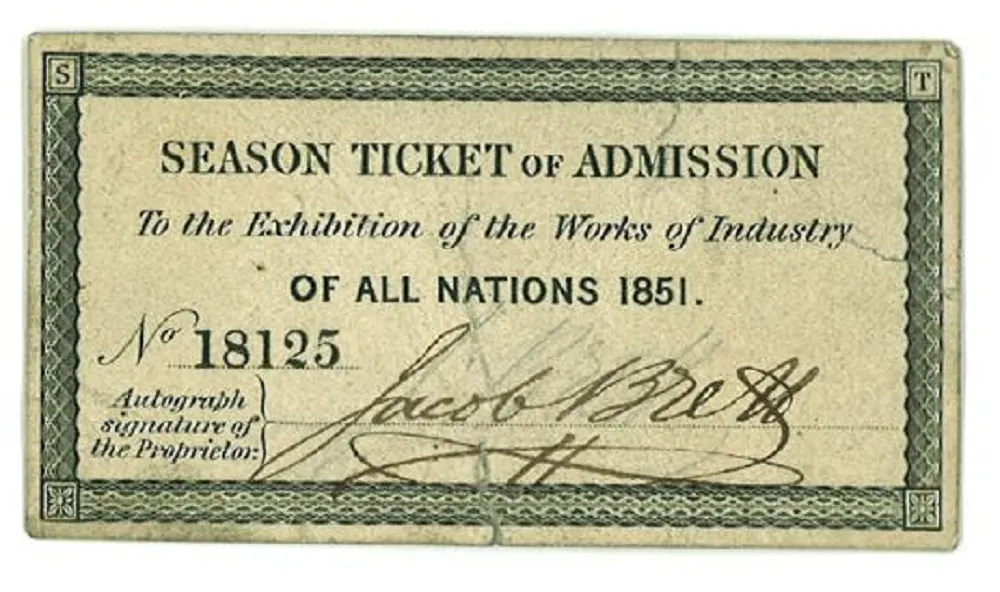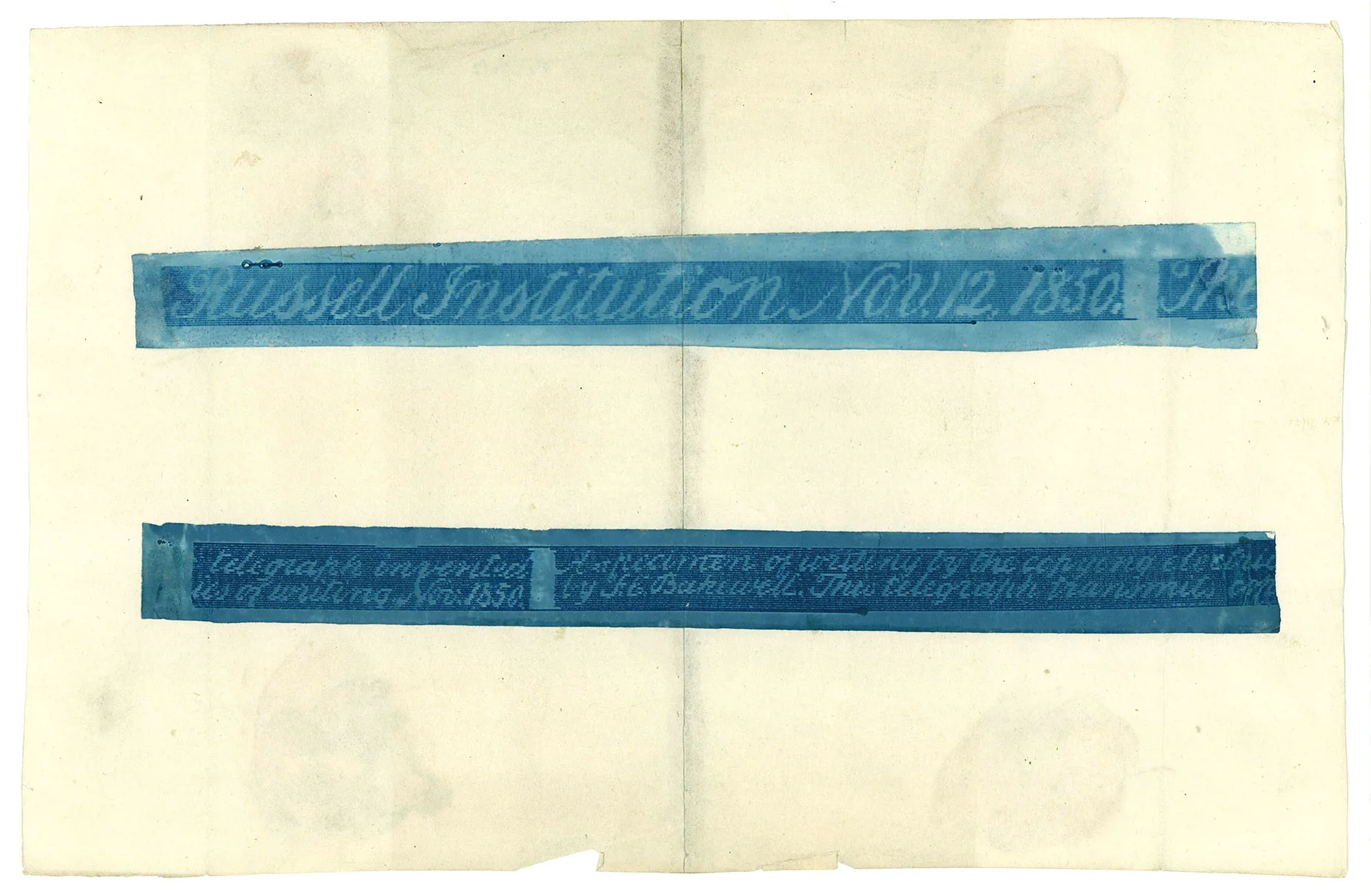'The Exhibition of the Works of Industry of all Nations 1851' comprised 7000 British and 6000 foreign entries.
In the technical quality of the exhibits, Britain succeeded in its unspoken aim of outclassing the work of the thirteen European countries, thirteen American countries, and seven others from around the world who participated in addition to the various British colonies.

During the five months that the exhibition was open, over 6,000,000 people paid at least a shilling to visit and at its peak, some 40,000 people were admitted each day. The building, specially erected for the purpose in Hyde Park, was an exhibit in itself. Conceived and designed of glass in a cast-iron frame, by Joseph Paxton, former head gardener of the Duke of Devonshire, its total area enclosed 7.39 hectares and included within its structure a row of huge elm trees.
The Crystal Palace, as the building was known, was dismantled afterwards, enlarged and re-erected in Sydenham, South London, where it remained until the 1930s.
British engineering reigned supreme at the Great Exhibition and one of the newest technologies was that of the electric telegraph. Various telegraphs were shown, including the five-needle telegraph used by the Great Western Railway and several examples of Cooke and Wheatstone's two-needle telegraph. A problem which had just been solved was the design of cables suitable for submarine telegraph transmission.
The brothers, John and Jacob Brett, had won from the French government the concession to run a submarine telegraph cable from Dover to Calais, and they took the opportunity to exhibit the telegraph instrument which would be used to send messages over their Channel cable.
Their exhibition catalogue entry proclaimed proudly "This printing telegraph effects all the purposes of telegraphic communication by a single wire only; printing in Roman ... letters, recording in duplicate with the rapidity of a compositor... It is worked by galvanic or magnetic electricity, and controlled by hydraulic or atmospheric regulators." On display were specimens of the "printing executed at 200 miles distance". One of these is now in the Archives of the Institution of Engineering and Technology, illustrated below.
The cable was successfully laid across the channel on 25 September 1851 and T R Crampton, who was in charge of the laying operation, was able to announce the feat just as Queen Victoria was leaving the platform after formally declaring the exhibition closed.
Mounted strips of paper with a message printed by the electric printing telegraph. Top strip reads:
'Russell Institution Nov. 12 1850. The'
The second strip reads:
'telegraph invented. A specimen of writing by the copying electric/ ies of writing. Nov. 1850. by F C Bakewell. This telegraph transmits cop'
Translation- 'A specimen of writing by the copying electric telegraph invented / by F C Bakewell. This telegraph transmits copies of writing Nov. 1850.'

We’re upgrading our systems, and this includes changes to our customer and member account log in, MyIET. It’s part of our big picture plan to deliver a great experience for you and our wider engineering community.
Whilst most of our websites remain available for browsing, it will not be possible to log in to purchase products or access services from Thursday, 17 April to Wednesday, 30 April 2025. Our Member Relations team is here to help and for many of our services, including processing payments or orders, we’ll be able to support you over the phone on +44 (0)1438 765678 or email via membership@theiet.org.
We apologise for any inconvenience this may cause and thank you for your understanding.
For further information related to specific products and services, please visit our FAQs webpage.
